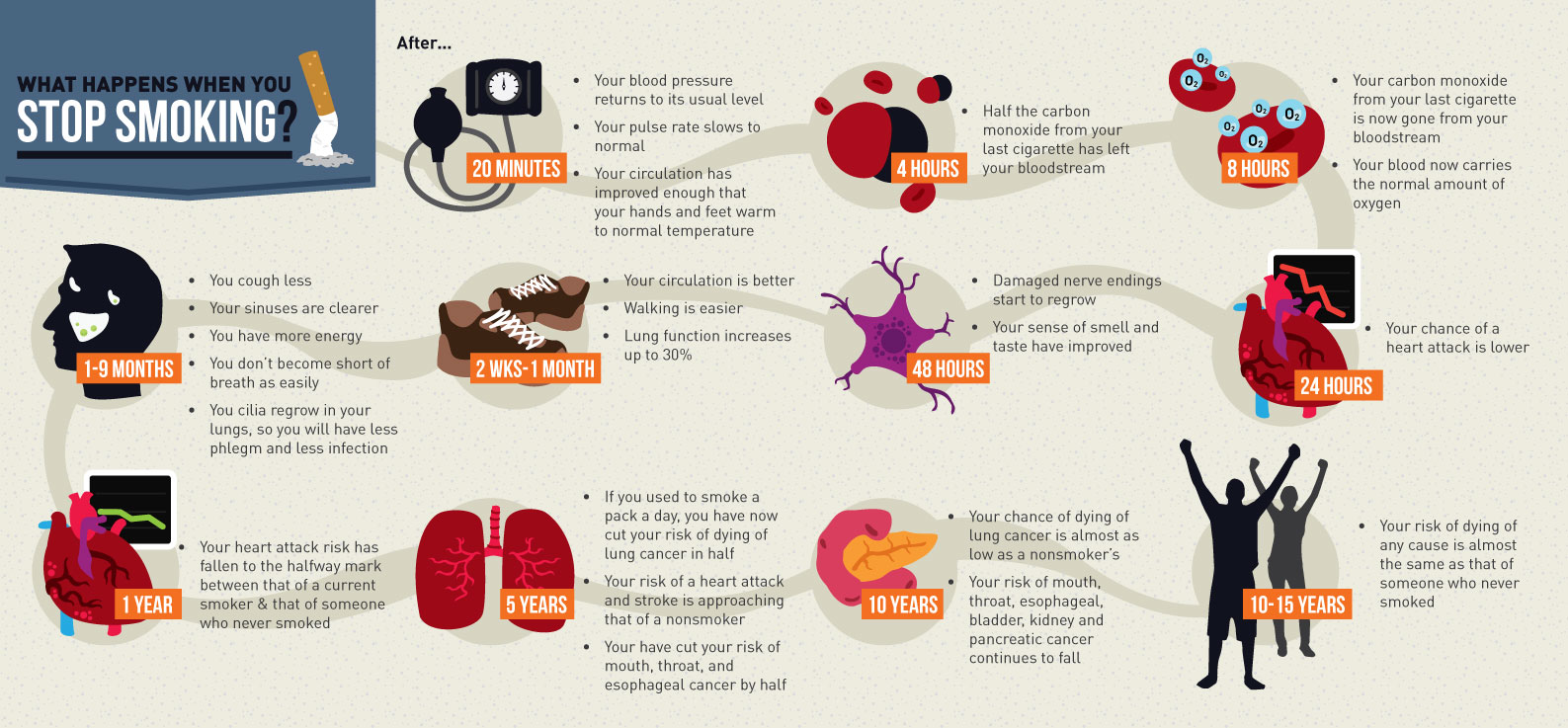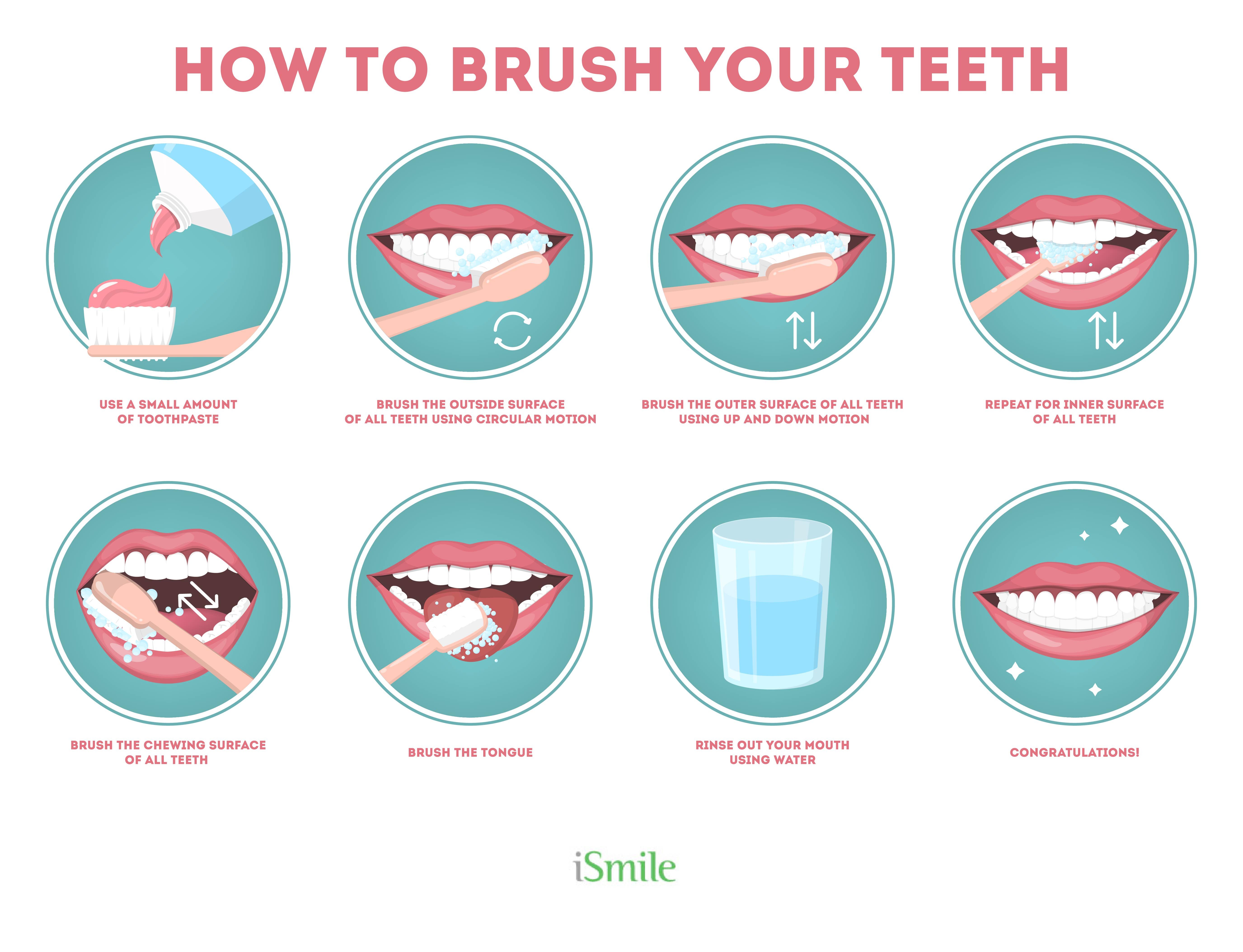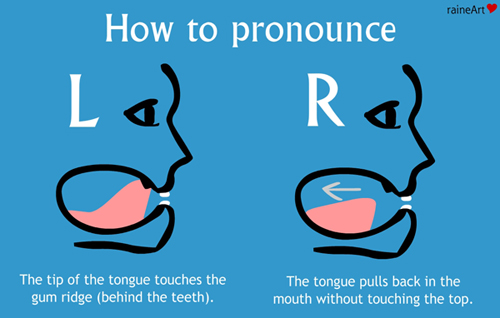How do you get cuts in your mouth. Cut in Mouth: First Aid, Treatment, Healing Time, and Prevention Tips
How do cuts in the mouth occur. What are the first aid steps for oral injuries. How long does it take for mouth cuts to heal. What precautions can prevent oral injuries.
Common Causes of Mouth Cuts and Injuries
Cuts and injuries in the mouth are surprisingly common and can occur during everyday activities. Understanding the causes can help us take preventive measures and be better prepared to handle such situations.
- Accidental biting while chewing
- Sports-related injuries
- Falls or accidents
- Yard work mishaps
- Chewing on hard objects like pencils
Despite the relatively small area of the mouth, it contains numerous blood vessels. This anatomical feature explains why even minor oral cuts can bleed profusely, often appearing more severe than they actually are.
Immediate First Aid for Mouth Cuts
When you experience a cut inside your mouth, prompt action can help minimize discomfort and promote faster healing. Here’s a step-by-step guide for immediate first aid:
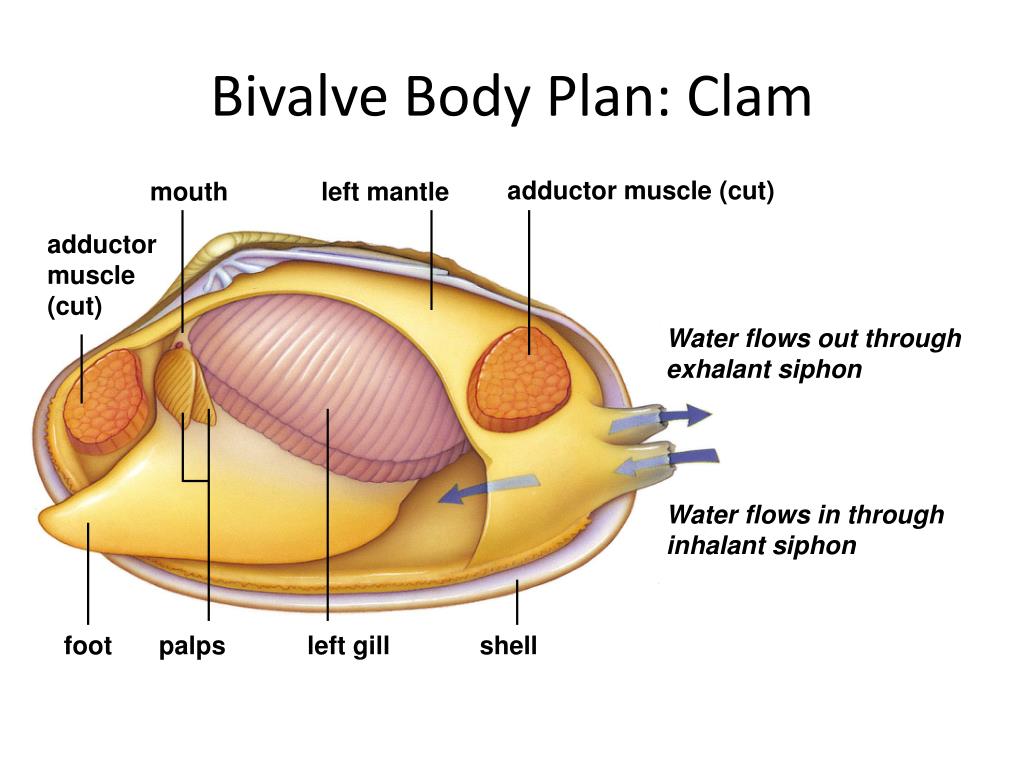
- Wash your hands thoroughly to prevent introducing bacteria to the wound
- Rinse your mouth with clean water to remove any debris
- Apply gentle pressure with a clean cloth to stop bleeding
- Use a cold compress or suck on a popsicle to reduce swelling and numb pain
- Avoid applying creams or ointments inside the mouth
Is salt water effective for cleaning mouth cuts? Yes, rinsing with salt water once a day can aid in the healing process. It helps cleanse the wound and reduce bacterial growth.
Home Remedies and Treatment Options
After providing first aid, several home remedies can help manage pain, reduce swelling, and promote healing:
- Salt water rinses: Mix 1/2 teaspoon of salt in a cup of warm water and rinse gently
- Arnica supplements: Known for their anti-inflammatory properties
- Cold compress: Apply to the outside of the face near the affected area
- Garlic: A folk remedy believed to have antibacterial properties (use with caution)
Are there foods to avoid with mouth cuts? Yes, it’s advisable to steer clear of acidic, spicy, or rough-textured foods that may irritate the wound and delay healing.

Natural Healing Boosters
The human body has remarkable healing capabilities, especially when it comes to oral injuries. Saliva plays a crucial role in this process, containing proteins that aid tissue repair. Additionally, the rich blood supply in the face and mouth region contributes to faster recovery compared to other parts of the body.
When to Seek Medical Attention
While most oral cuts can be treated at home, certain situations warrant professional medical care:
- Persistent bleeding (longer than 10 minutes)
- Deep or large cuts (more than half an inch)
- Injuries caused by rusty metal or animal/human bites
- Signs of infection (discoloration, warmth, redness, or discharge)
- Jagged edges that don’t align properly
Do all mouth cuts require stitches? No, most oral cuts heal on their own without stitches. However, deep cuts, especially on the lip, may require stitches to ensure proper alignment and minimize scarring.
Potential Complications
While rare, mouth injuries can lead to complications if not properly treated:

- Infection: Open wounds are vulnerable to bacterial invasion
- Scarring: Particularly concerning for cuts on the lip line
- Tetanus: A risk with puncture wounds from rusty objects
Healing Time and Recovery Process
One of the remarkable aspects of oral injuries is their accelerated healing rate compared to cuts elsewhere on the body. This rapid recovery is attributed to several factors:
- Rich blood supply in the mouth and face
- Healing properties of saliva
- Faster cell regeneration in oral tissues
How long does it typically take for a mouth cut to heal? Most oral cuts heal within 3-7 days, depending on the severity of the injury and individual factors such as overall health and age.
Factors Influencing Healing Speed
While the mouth naturally heals quickly, several factors can impact the recovery process:
- Wound care and hygiene
- Nutritional status
- Smoking habits
- Underlying health conditions
Prevention Strategies for Oral Injuries
Preventing mouth cuts and injuries is always preferable to treating them. Here are some practical tips to minimize the risk of oral injuries:

- Chew food slowly and mindfully
- Wear a mouthguard during contact sports
- Avoid using teeth as tools (e.g., to open packages)
- Break the habit of chewing on pens, pencils, or fingernails
- Follow safety instructions for dental appliances like braces
Can proper dental care help prevent mouth injuries? Yes, maintaining good oral hygiene and regular dental check-ups can help identify and address potential issues that might lead to injuries, such as sharp edges on teeth or ill-fitting dental work.
Special Considerations for Children
Children are particularly prone to mouth injuries due to their active lifestyles and developing coordination. Parents and caregivers should be aware of additional precautions:
- Childproof the home to prevent falls and accidents
- Teach proper use of utensils and careful eating habits
- Supervise playtime, especially with toys that might pose a risk
- Ensure car seats and safety belts are properly used
Should children use different first aid techniques for mouth cuts? While the basic principles remain the same, it’s important to use age-appropriate methods. For example, ice pops are safer than ice cubes for young children to prevent choking hazards.

Emotional Support for Children with Mouth Injuries
Mouth injuries can be particularly distressing for children. Providing emotional support is crucial:
- Remain calm and reassuring
- Explain the treatment process in simple terms
- Offer distractions during healing
- Praise their bravery and cooperation
Long-term Care and Monitoring
While most mouth cuts heal quickly, it’s important to monitor the injury site for proper healing and potential complications:
- Check the wound daily for signs of infection
- Maintain good oral hygiene without disturbing the healing area
- Follow up with a healthcare provider if healing seems delayed
- Be attentive to any changes in mouth function or appearance
How can you tell if a mouth cut is healing properly? Signs of proper healing include gradual reduction in pain and swelling, formation of a protective scab (if applicable), and the absence of pus or unusual discharge.
Scar Management
For cuts that result in visible scarring, especially on the lips, there are options for minimizing their appearance:
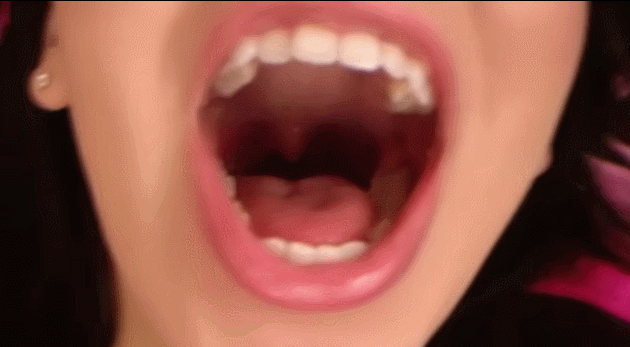
- Gentle massage of the healed area to promote blood flow
- Application of vitamin E oil or silicone-based scar gels
- Sun protection to prevent discoloration
- Consultation with a dermatologist for advanced treatments if necessary
Mouth cuts and injuries, while common, can be effectively managed with proper care and attention. By understanding the causes, implementing preventive measures, and knowing how to respond when injuries occur, we can minimize their impact on our daily lives. Remember, while most oral cuts heal quickly on their own, it’s always wise to seek professional medical advice for severe injuries or if you notice any signs of complications. With the right approach, we can ensure that these minor setbacks don’t become major health concerns.
Cut in Mouth First Aid, Treatment, Healing Time, and Precautions
It’s very easy to get a cut in your mouth. Oral injuries can accidentally happen during regular daily activities. Playing sports, doing yard work, accidentally biting your cheek while chewing, falling down, and even chewing on your pencil can all lead to an oral cut.
While there’s a relatively small amount of space in your mouth, the area has a lot of blood vessels. This means oral cuts and scrapes can bleed a lot, even if the injury isn’t serious.
While most oral injuries aren’t serious and can be treated at home, they should be properly cared for to avoid infection and irregular scarring.
Read below to learn how to treat an oral cut and know when to get professional help.
For cuts inside your mouth such as tongue, gums, inside of the cheek, and roof of the mouth:
- Wash your hands before handling the injury.
- Clean the cut by rinsing with water.
- Remove any debris in your mouth.

- Slow bleeding by gently pressing a clean towel to the wound, and hold it there as long as necessary until the bleeding stops.
- Reduce swelling and pain by sucking on a popsicle. Avoid giving ice cubes to children due to choking risks.
- Don’t apply any creams to the inside of the mouth, but check on the wound every day and call a doctor if it isn’t healing properly or if pain worsens.
Following first aid, home treatment of oral cuts can help decrease pain and swelling, and promote healing. Try this:
- Rinse with saltwater once a day to aid healing.
- Consider arnica supplements from the drugstore or health food store to decrease swelling and bruising.
- Chewing garlic is a folk remedy believed to kill bacteria in the mouth and prevent infection. Don’t chew garlic if the wound is still open. Discontinue if there’s any burning sensation.
- Avoid foods that might sting, such as citrus and spicy food.
- Suck on a popsicle or hold an ice pack on the outside of your face near the affected area to numb pain and decrease swelling.

Possible effects of getting a mouth injury include:
Infection
Any time your skin is opened and exposed, you run the risk of infection. Viruses and bacteria can enter body tissues and blood, causing further irritation or dangerous complications.
Scarring
A cut on the lip, especially on your lip line or in the crease where upper and lower lips meet, can alter the exterior shape of your mouth. If the cut is large or jagged, a doctor may offer stitches to help things heal evenly.
Usually, you can properly care for an oral wound at home. However, seek urgent care if:
- bleeding doesn’t stop after 10 minutes
- the cut is deep
- the cut is larger than half an inch
- the cut was caused by puncture, from rusty metal, or from an animal or human bite
- the edges are very jagged and not straight
- there’s debris you can’t clear away
- there’s any sign of infection, like discoloration, it feels warm to the touch, redness, or draining fluid
Rarely does a scrape in the mouth require medical attention. Below are some reasons you may want to see a doctor.
Below are some reasons you may want to see a doctor.
Stitches
Stitches may be required to stop bleeding in a very deep cut. If the cut is on the lip, they also help keep the lip lines and border in shape.
Antibiotics
If you were exposed to bacterial infection, a doctor may prescribe antibiotics. Always take your full round of antibiotics — don’t just stop when you feel better.
Tetanus shot
Call a doctor right away if your cut was caused by a puncture and you’re not up to date on your tetanus vaccine — or if you don’t know the last time you had a tetanus shot.
Cuts inside the mouth heal faster than cuts anywhere else on the body. They tend to heal on their own, in a matter of days, without stitches.
Scientists have studied why oral wounds heal faster. The rich blood supply in the face and mouth help speed recovery. Saliva promotes healing and also contains proteins that aid tissue repair.
Research also shows that the tissues inside your mouth make new cells faster than other parts of the body.
You can help your cut heal faster by keeping it clean and being very careful around the area to avoid further trauma or damage.
While accidents happen, here are some specific ways you can prevent oral injuries:
- Chew slowly to avoid biting your cheek or tongue, which is easier to do when your mouth is swollen.
- Care for braces by following safety instructions from your dentist.
- Never run while holding something sharp.
- Don’t use your teeth as scissors to open packages and bottles.
- Don’t chew on pens, pencils, or fingernails.
- Wear a mouthguard when playing contact sports.
You can usually care for oral cuts and scrapes with first aid at home. It’s important to keep the wound clean and check on it daily. Call a doctor if the cut is severe or there are signs of infection. The good news is that cuts in the mouth naturally heal very fast.
How to Deal with Wounds or Cuts in Your Mouth
Top Articles
More Articles
Published date field
Last Updated:
Medically Reviewed By Colgate Global Scientific Communications
How can something so tiny be so annoying and painful? Cuts inside your mouth can happen to anyone. They can make your lips or cheeks swell, and they burn when you eat citrus fruits or drink hot beverages. Thankfully, because they are so common there are clear and easy tips to help them heal. We’ll give you the rundown of why these little injuries can be a real pain and answer your questions about how to treat inner lip or mouth wounds.
They can make your lips or cheeks swell, and they burn when you eat citrus fruits or drink hot beverages. Thankfully, because they are so common there are clear and easy tips to help them heal. We’ll give you the rundown of why these little injuries can be a real pain and answer your questions about how to treat inner lip or mouth wounds.
Why do mouth wounds happen?
Cuts on the lips, tongue and the inside of the mouth happen to almost everyone. These areas have the softest, thinnest skin on your body, so the smallest bump or scrape can break the skin. You may have gotten wounds from your teeth cutting the inside of your mouth or bruised your lips from accidentally biting down. Some inner lip wounds can be canker sores or cold sores.
Most inner lip or outer lip wounds are minor. Sometimes injuries can be more serious, such as injury to the face in a fall or car accident. In these instances, you should call your dentist to examine the wound.
It may be scary at first to feel or see a wound in your mouth because they tend to bleed more than a cut on another part of your body. Not only is that skin soft and vulnerable, but it’s close to blood vessels, increasing the amount of bleeding. It’s important to clean this area with good oral hygiene which will help it heal.
Not only is that skin soft and vulnerable, but it’s close to blood vessels, increasing the amount of bleeding. It’s important to clean this area with good oral hygiene which will help it heal.
How do you treat cuts on your lips?
If the cut or wound is on the outside of the mouth like on your lips, you can easily keep it clean with mild soap, warm water and a clean cloth. Apply pressure with the towel to stop or slow any bleeding.
What should you put on cuts inside your lip or mouth?
You can easily do inner lip wound care at home. Rinse with salt water or a 1:1 solution of hydrogen peroxide and water multiple times a day, like after meals. Salt water rinses have been shown to help your body heal. Don’t swallow these solutions, especially not hydrogen peroxide. Don’t worry if putting hydrogen peroxide on the lip or mouth wound makes your wound foam up a little, that’s normal when peroxide meets skin. Cleaning the wound with these solutions will ensure there’s no dirt or debris in the cut and allow your body to heal itself even faster.
The best way to heal a cut in your mouth in 3 steps
Often small wounds in the mouth can heal quickly with good hygiene and time. The American Dental Association (ADA) says minor sores or irritations like these can heal within a week or two. Follow these three steps from the University of Rochester Medical Center:
- Do salt water rinses or hydrogen peroxide and water solution rinses after meals to clear bacteria and food debris
- Make sure you aren’t touching the cut with your tongue or fingers. It’s tempting to check on it, but touching it may get the wound dirty and slow down healing. Wash your hands regularly just in case you do touch it.
- If your inner lip wound has caused swelling or bruising, you should press gently on the wound with an ice pack or crushed ice wrapped with a clean cloth.
If your at-home care is not helping and you’re worried about it, you may need to see the doctor.
When should you call your doctor about a mouth wound?
Here is where it may be scarier than a little cut. Pay attention to your body and if any of the following are true, contact your doctor:
- Bleeding does not stop even after putting pressure with a cloth
- The cut on your inner lip is deep
- The cut extends from your mouth to the face
- The cut in the lip is a puncture or hole
- You develop any of these signs of infection:
- Redness that expands to the surrounding area
- Tender and painful
- Fever develops
- A pimple-like swelling with pus
- Swelling increases and bruising of skin or hematoma may occur
If your mouth wound is around a tooth and the tooth is loose or broken, call your dentist. While you are waiting to see your dentist, the ADA suggests cold compresses and rinses in the meantime for sores and mouth injuries.
How do you prevent cuts in your mouth or on your lips?
If you’ve developed an injury from sports or other physical activities, a mouth guard could prevent your teeth from scraping your cheeks. Mouth guards provide a solid yet soft surface for your teeth. Your teeth can clench down on it instead of the inside of your mouth! They will also prevent you from biting your lips and accidentally breaking the skin. Mouth guards can be found in stores or customized for you by your dentist.
Be patient and let your cut heal
By keeping your wound clean, you are letting your body focus on healing the wound. If you are still concerned about the pain or swelling, call your doctor or dentist, and they can assess if you need further treatment. Until then, rinse with salt water or a mix of hydrogen peroxide and water, stop yourself from touching it and use cold compresses to help with any swelling or bruising. With these tips, the injury is on its way to healing.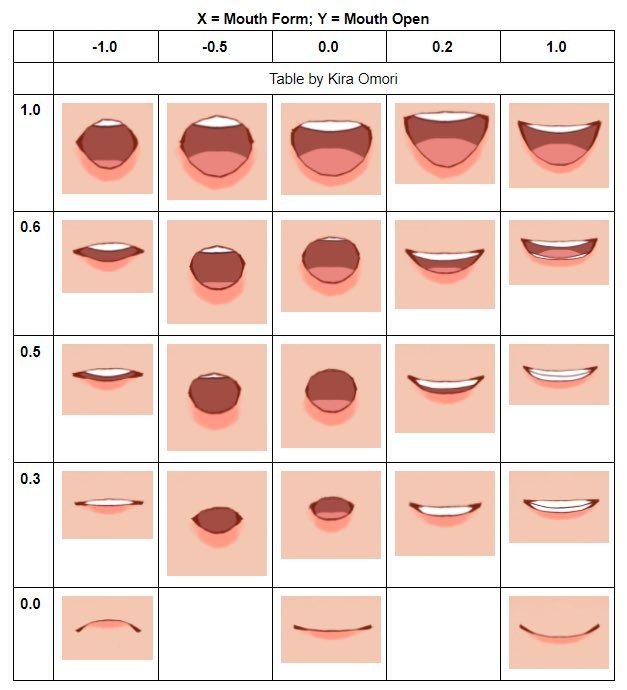
Oral Care Center articles are reviewed by an oral health medical professional. This information is for educational purposes only. This content is not intended to be a substitute for professional medical advice, diagnosis or treatment. Always seek the advice of your dentist, physician or other qualified healthcare provider.
Was this article helpful?
Like
Neutral
Thank you for submitting your feedback!
If you’d like a response, Contact Us.
what to do when they appear, and how to treat – useful information, LeaderStom dentistry in Moscow
Human health is a very fragile and unpredictable thing, and diseases often appear out of nowhere. This also applies to diseases of the oral cavity. If you are faced with such an unpleasant problem as the appearance of a sore in your mouth, then you probably would like to know how to get rid of it.
The appearance of wounds on the oral mucosa of a person is usually accompanied by pain and causes discomfort during eating or talking. But many people, despite these symptoms, prefer not to seek help from a doctor. Someone simply ignores the problem, while others try to self-medicate the disease at home. Both of these approaches only in rare cases give a positive result.
But many people, despite these symptoms, prefer not to seek help from a doctor. Someone simply ignores the problem, while others try to self-medicate the disease at home. Both of these approaches only in rare cases give a positive result.
The presence of any wounds and injuries covering the sky indicates health problems in an adult or child. This situation should not be left to chance, you should seek help from a dentist. Only he can diagnose the disease and prescribe the appropriate treatment.
If you are concerned about sores in your mouth, then you can contact the network of dental clinics “LeaderStom” in order to solve this problem. We will help you cope with the situation and make every effort to quickly cure the disease.
– 15% on the first visit
Sores in the mouth as a sign of aphthous stomatitis
Wounds in the mouth can occur as a result of the development in a person of a separate independent disease of the oral mucosa caused by the growth and development of pathogenic microorganisms. But, in addition, the cause of such wounds may be hidden in the general somatic condition of an adult or a child.
But, in addition, the cause of such wounds may be hidden in the general somatic condition of an adult or a child.
In most cases, mouth ulcers are symptoms of a disease such as aphthous stomatitis. Stomatitis is a lesion of the mucous membrane of the human oral cavity, which occurs as a result of an atypical reaction of the immune system to foreign irritants. Depending on the nature and causes of the disease, stomatitis can be of various types: ulcerative, herpetic, allergic, vesicular, etc. But people have to deal with the aphthous form of this disease most often.
Let’s name the main symptoms of aphthous stomatitis:
- Appearance in the mouth of a person round ulcers (aphthae), which are grayish in color and surrounded by a red inflamed rim. Ulcers are located either separately or in groups, have a different size.
- Painful sensations in the affected areas of the upper and lower palate of a person, arising in the process of eating, drinking or talking.

- Deterioration of the general well-being of a person, weakness.
- Temperature increase. But this is not an obligatory symptom, it occurs in most cases in children, since they are more difficult to tolerate aphthous stomatitis in the oral cavity.
- Enlarged submandibular lymph nodes. This symptom of aphthous stomatitis is also more common in children than in adults.
Why does aphthous stomatitis occur?
As noted above, the causes of aphthous wounds in the human mouth can be both local and general somatic. Let’s consider the main ones.
Local causes of aphthous stomatitis:
- Mechanical damage to the human oral mucosa. Such injuries occur as a result of a person eating hard and tough food. Often the cause of aphthous stomatitis can be even a small scratch in the sky.
- Thermal lesions of the human oral mucosa. The occurrence of wounds and the development of aphthous stomatitis in this case provoke mucosal burns that a person could get by drinking hot drinks or food.

General somatic causes of wounds in the human oral cavity:
- Factors of heredity. Predisposition to the occurrence of aphthous stomatitis in the mouth may be determined by genetic causes. Therefore, there is a risk of developing this disease and the manifestation of a chronic form of stomatitis (when ulcers on the mucous membrane appear regularly) in people whose parents also suffered from this disease.
- Somatic diseases. Aphthous stomatitis often develops in people who suffer from any side somatic diseases. For example, it can be diseases of the digestive system and the gastrointestinal tract.
- Weak immunity. For this reason, children are susceptible to oral ulcers, since their immunity has not yet been fully developed. In a child, aphthous stomatitis is more severe than in an adult and is accompanied by an increase in temperature and a deterioration in general well-being. Against the background of colds, immunity is also often reduced, and aphthous stomatitis occurs in the human mouth.

- Avitaminosis. With an improper diet, a person does not receive enough substances necessary for the successful functioning of the body. Against the background of a lack of vitamins C and B or trace elements such as selenium, folic acid, zinc or iron, aphthous stomatitis also occurs in a person’s mouth in some cases.
- Allergy. An allergic reaction associated with eating foods such as citrus fruits, nuts (especially peanuts), chocolate, red berries (strawberries, wild strawberries) or foods containing gluten (cereals, pasta), in some cases leads to the appearance of aphthous wound in the human mouth.
- Stress. When a person gets into a stressful situation, he spends significant resources to cope with the current problem. This leads to a breakdown, a decrease in immunity and a general weakening of the body, as a result of which wounds form in the human oral cavity, and he falls ill with aphthous stomatitis.
Read also
Sores in the mouth: what to do when they appear and how to treat it
Why fistula occurs on the gums and how to treat it
Why stomatitis occurs on the tongue and how to treat it
How to get rid of wounds in the mouth?
Stomatitis wounds that occur in the human mouth, in most cases, heal on their own 7-10 days after formation. But timely treatment of aphthous stomatitis is necessary in order to prevent the formation of ulcers on the oral mucosa of a person again.
But timely treatment of aphthous stomatitis is necessary in order to prevent the formation of ulcers on the oral mucosa of a person again.
The fact is that the acute form of stomatitis, which is characterized by the sudden appearance of wounds of various sizes on the upper and lower palate in the human mouth, if the problem is ignored or the wrong treatment is carried out, tends to flow into the chronic form of the disease. Wounds in the oral cavity with chronic stomatitis appear periodically and disturb a person from time to time throughout life.
To exclude the possibility of the appearance of aphthous stomatitis ulcers again, dentists carry out the following treatment:
Topical therapy . It involves the treatment of wounds on the oral mucosa with antiseptic agents: gels, ointments or sprays. During such treatment of stomatitis, a person is prescribed daily rinses with solutions such as furatsilin, chlorhexidine, miramistin, etc.
General therapy. Includes a set of measures to cure this disease and at the same time strengthen the body. To strengthen the body, the doctor prescribes immunomodulatory drugs and vitamin courses to a person. To combat aphthous stomatitis, different drugs are used, depending on the nature of the disease and the causes of its occurrence: antihistamines, antivirals, steroids or antibiotics.
Includes a set of measures to cure this disease and at the same time strengthen the body. To strengthen the body, the doctor prescribes immunomodulatory drugs and vitamin courses to a person. To combat aphthous stomatitis, different drugs are used, depending on the nature of the disease and the causes of its occurrence: antihistamines, antivirals, steroids or antibiotics.
The selection of funds for the treatment of wounds with aphthous stomatitis is carried out only by a doctor and occurs after a visual examination of the human oral cavity, carrying out the necessary diagnostic studies and making a diagnosis. Clinic “LeaderStom” offers to use the services of our experienced doctors in order to carry out these operations.
What to do so that the wounds in the mouth do not appear again?
Taking a course of timely treatment of aphthous stomatitis will reduce the risk of such a disease of the human oral mucosa in the future, but in some cases it will not completely exclude this possibility.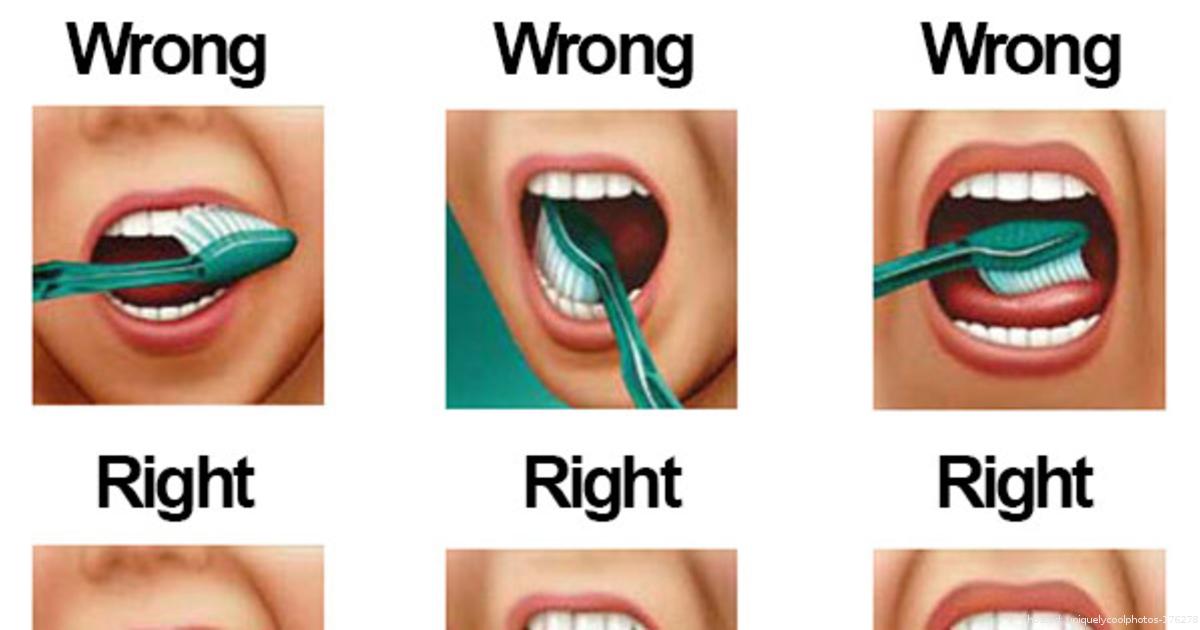 This is especially true for situations where a person has a hereditary tendency to develop aphthous sores in the mouth, suffers from autoimmune diseases, and is prone to allergies.
This is especially true for situations where a person has a hereditary tendency to develop aphthous sores in the mouth, suffers from autoimmune diseases, and is prone to allergies.
In such cases, preventive measures are required:
- Enhanced oral hygiene. It involves not only daily brushing of a person’s teeth and gums twice a day, but also rinsing the oral mucosa with solutions of antiseptics or medicinal herbs in order to prevent stomatitis.
- Balanced nutrition. Revision of the diet and diet will help saturate the human body with the necessary vitamins and minerals and reduce the risk of allergies that can cause aphthous sores in the human mouth.
- Taking vitamin complexes. If nutrition fails to compensate for the lack of nutrients in the body, then for the prevention of stomatitis a person can regularly take vitamin complexes, the composition of which, doses and duration of administration will be determined by your doctor, based on the results of the tests.

- Taking immunomodulating agents. To date, there are many tools that stimulate the immune system and encourage the body to resist diseases. They can be either plant-based or laboratory-synthesized. The selection of such drugs is individual for each person and is carried out by a doctor.
- Compliance with preventive measures, timely treatment of the disease and following the recommendations of the attending physician will help a person avoid relapses of aphthous stomatitis and the reappearance of sores in the mouth in the future. Be attentive to yourself and your health, listen to the signals that your body gives, and at the first signs of a disease of the oral mucosa, seek help from a dentist.
You should not self-medicate stomatitis and use the advice of friends or information found on the Internet, since the exact cause of the occurrence of wounds in the mouth and stomatitis can only be identified by diagnostic means. And the choice of treatment is determined in accordance with the diagnosis, and in each case it is individual. Dentistry “LeaderStom” offers its assistance in the treatment of aphthous stomatitis and other diseases of the oral mucosa. Contact us, and we will help to identify the cause of the disease and, in accordance with this, we will select medicines.
Dentistry “LeaderStom” offers its assistance in the treatment of aphthous stomatitis and other diseases of the oral mucosa. Contact us, and we will help to identify the cause of the disease and, in accordance with this, we will select medicines.
Free medical consultation
with artificial intelligence diagnosis
The promotion is valid until June 30
For diagnostics, you need CT
Enter your phone number, we will call you back and find a convenient time for you
Seizures in the corners of the mouth – causes, treatment, prevention
Seizures
Table of contents
- How are seizures manifested?
- Causes of jamming in the corners of the mouth
- Symptoms of pathology
- Diagnosis of angulitis
- Treatment of congestion in the corners of the mouth
- Help at the Mama Papa Z clinic
{loadposition banner-pv} the formation of areas of inflammation in the corners of the mouth . This condition can be unilateral or bilateral. In severe cases, it causes severe pain and an aesthetic defect.
This condition can be unilateral or bilateral. In severe cases, it causes severe pain and an aesthetic defect.
How do seizures manifest themselves?
Seizures in the corners of the mouth are the result of swelling, inflammation and cracks in the skin that occur when the skin is malnourished. As a result, skin erosions and sores may appear.
Although this disease looks like herpes, it is not contagious. The inflammation also does not spread to other parts of the body. However, unilateral bites often affect both corners of the mouth over time.
Causes of jamming in the corners of the mouth
Cheilitis occurs if the corners of the mouth are constantly moistened, and there is a violation of the local immune defense of the skin. The most common causes of corners of the mouth are a fungal or bacterial infection that causes angulitis in the presence of these risk factors:
- braces on teeth;
- ill-fitting dentures;
- habit of constantly licking lips;
- salivation;
- malocclusion;
- missing part of the teeth, eg in the elderly;
- decreased elasticity of the skin around the mouth as a result of rapid weight loss or aging;
- smoking;
- deficiency of B vitamins, zinc and/or iron in the body;
- malnutrition;
- associated atopic dermatitis and other allergic diseases.

Thumb sucking is the cause of a child’s seizure.
Angular cheilitis often develops in patients with anemia, leukemia, Down’s syndrome, weakened immune system, oncological diseases, as well as in people with diabetes mellitus. Fungi of the genus Candida – the direct cause of inflammation – multiply well with a high level of glucose in the blood. In addition, diabetes weakens the immune system, making it difficult to fight infection.
Seizures often occur in people suffering from anorexia or bulimia. They are also included in the complex of signs of the Plummer-Vinson syndrome (damage to the esophagus, iron deficiency anemia, glossitis and cheilitis). Finally, this symptom appears with hypervitaminosis A, which can develop when it is excessive in food (for example, in cod liver) or in food supplements taken.
Symptoms of pathology
In case of slight inflammation, there is peeling in the corner of the mouth and discomfort when it is opened wide. Later, swelling and redness occur at the site of the lesion, small cracks appear, and the pain intensifies.
Later, swelling and redness occur at the site of the lesion, small cracks appear, and the pain intensifies.
With significantly pronounced seizures, the following are noted:
- pain during eating or talking;
- sores and crusts in the corners of the mouth;
- non-healing cracks.
Stuck at the corners of the mouth – causes and treatment – require a visit to the dentist and dermatologist. Independent attempts to cope with this pathology are rarely successful. Patients suffer for a long time not only from pain. They may have problems communicating with family members, colleagues, clients at work, because with severe angulitis, the external manifestations of the disease are pronounced and unpleasant for others.
Diagnosis of Angulitis
To diagnose angular cheilitis, your doctor will perform a thorough examination of the lips and oral mucosa, looking for cracks, redness, swelling, or blistering of the skin. He will also find out the possible causes of the disease in order to choose the most effective treatment for zaed.
To diagnose similar-looking conditions, such as herpes labialis and erosive lichen planus, a specialist may take a swab from the damaged surface and send the material for analysis.
Treatment of seizures in the corners of the mouth
To determine how to treat seizures, sometimes you have to consult with specialists in various fields, including an endocrinologist, an infectious disease specialist, a gastroenterologist, a hematologist. It is better if the patient can be treated by a team of doctors in one clinic.
How to get rid of a jam forever? To do this, it is necessary to eliminate the infection and high humidity of the affected area. Usually, an antifungal ointment is prescribed for seizures, and in the presence of a secondary infection, antibacterial drugs. In some cases, a dermatologist may prescribe a cream with glucocorticoids, but self-medication with such drugs is strongly discouraged. For children, special safe ointments and other medicines are selected.
How to treat bites in the corners of the lips, if they are not caused by an infectious process? In this case, it is necessary to clarify their cause (vitamin deficiency, anemia, diabetes, and so on) and, if possible, eliminate it. The skin lesions themselves are treated with a neutral agent, for example, petroleum jelly. It is important to stop smoking and organize proper nutrition, rich in proteins and vitamins.
Many patients are looking for an effective home remedy for jam. In this case, the doctor suggests the following methods:
- rubbing the skin with fresh cucumber slices;
- treatment of the corners of the mouth with aloe juice;
- lubrication of cracks with tea tree oil, which can be purchased at the pharmacy and mixed with honey or a few drops of liquid vitamin E;
- drinking plenty of water;
- eating leafy greens, tomatoes, carrots, fruits rich in vitamins.
Anti-seizure medicine should be used for a sufficiently long time until the cracks are completely healed and signs of inflammation disappear.
Help at the Mama Papa Ya Clinic
The Mama Papa Ya family clinic network invites patients who are worried about angulitis to get a doctor’s consultation and learn how to cure seizures most quickly and effectively.
We offer:
- consultations of doctors of different profiles (dentist, dermatologist, endocrinologist and others) in one medical center;
- thorough diagnosis of the causes of the disease and their elimination;
- affordable prices for medical services;
- Treatment of patients of all ages.
Make an appointment with a dermatologist by phone or using the form on our website.
Description:
Seizures – inflammation and cracks in the corners of the mouth, usually caused by a fungal infection against the background of increased skin moisture, nutritional deficiencies and reduced immunity.
Reviews
Good clinic, good doctor! Raisa Vasilievna can clearly and easily explain what the essence of the problem is. If something is wrong, she talks about everything directly, not in a veiled way, as other doctors sometimes do. I don’t regret that I went to her.
If something is wrong, she talks about everything directly, not in a veiled way, as other doctors sometimes do. I don’t regret that I went to her.
Anna
I want to express my gratitude to the staff of the clinic Mom, Dad, me. The clinic has a very friendly atmosphere, very friendly and cheerful staff and highly qualified specialists. Thank you very much! I wish prosperity to your clinic.
Anonymous user
Today I removed a mole on my face at the dermatologist Kodareva I.A. Doctor is very thorough! Correct! Thanks a lot! Administrator Borshchevskaya Julia is friendly, clearly fulfills her duties.
Belova E.M.
Today I was served in the clinic, I was satisfied with the staff, as well as the gynecologist. Everyone treats patients with respect and care. We thank them very much and continue to prosper.
Anonymous user
The Mama Papa Ya clinic in Lyubertsy is very good. The team is friendly and responsive. I recommend this clinic to all my friends.


